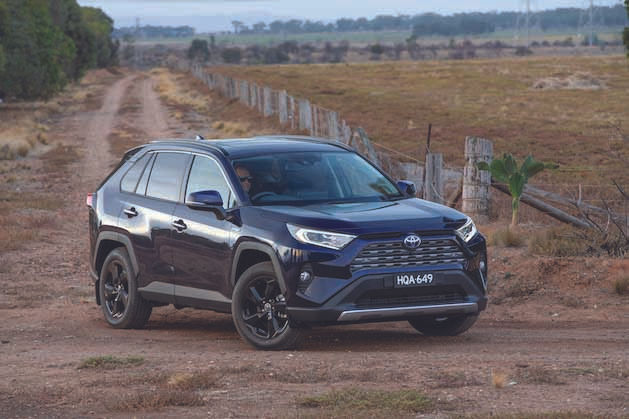
IN WHAT could prove to be a smash hit movie of the 2050s, the battle for Australian market supremacy between Ford and Toyota continues to play out with the release of the March new car sales figures.
The March result of 109,647 passed the previous March record of 106,988, achieved in 2018, while the January to March result of 304,452 sales is the best-ever first quarter for new vehicle sales.
In a virtual carbon copy of previous months, Ford's Ranger was again the top selling vehicle, but Toyota continues to dominate the overall sales and remains Australia's favourite manufacturer.
The Ranger, in both 4x2 and 4x4 variants, took out the gong for most popular vehicle with total sales of 5,661, a 25% increase in sales over March 2023, backed up by another strong performance by the Everest wagon, based on the Ranger's underpinnings, which sold 2,264 units for the month.
Perhaps alarmingly for Ford, while these two models recorded a respectable 7,925 combined sales, the company's total deliveries for the month were just 8,776, meaning the rest of the Ford passenger and commercial range sold just 851 vehicles.
Although a new Mustang is scheduled to arrive later this year, and is expected to provide a welcome boost to sales, the delay would be hurting dealers wanting to secure orders as soon as possible.
For Toyota, the challenge is to secure sufficient stock of vehicles to meet demand across the full range, with customers experiencing long lead times for new models, which will be impacting not just Toyota's overall lead, but also holding a number of popular cars back from a share of the lead.
Despite the delays, acknowledged by Toyota, the company has three of the Top 10 sellers, with the RAV4 (5,074) second, followed by the HiLux (3,995) in fourth, with the LandCruiser selling 2,159 units to be ninth.
The Tesla Model Y continues to ride a wave of popularity, selling 4,379 units to be third overall, with the Mitsubishi Outlander holding a solid fifth with 2,764 sales.
Isuzu's D-Max remains another popular choice for buyers, holding on to sixth with 2,465 sales, ahead of the Ford Everest (2,264), Nissan X-Trail (2,261) edging out the LandCruiser by just two units, with the Mazda CX-5 scoring 10th overall, selling 2,134 models.
With total sales of 18,961 vehicles, Toyota finished the month more than 10,000 units ahead of it's US-based rival, while Mazda finished a close third with 8,246 sales, followed by Mitsubishi with 7,866 sales.
Year-to-date figures provide even more insight into the dominance of Toyota, which has delivered a massive 56,238 vehicles in the three months up to March 31.
This places it 32,477 vehicles ahead of second-highest manufacturer Mazda (23,761), with Ford third after three months with 22,675 sales - a good portion of those coming from the Ranger/Everest model group.
Korean manufacturers KIA and Hyundai collectively sold over 36,000 units in the first three months of the year, with junior partner KIA delivering 18,918 to hold out bigger sibling Hyundai (17,850), while Nissan (14,293), Isuzu Ute (12,801), Tesla (12,789) and MG (12,429) rounded out the top 10 manufacturers for the first quarter of the year.
Tony Weber, Chief Executive of the Federal Chamber of Automotive Industries (FCAI), said it was remarkable nine of the past 12 months saw the industry achieve record sales results, since April 2023, the industry delivered 1,252,230 new vehicles to the market.
“This is a terrific result for the sector however, all car brands are well aware that these results cannot be taken for granted,” Mr Weber said.
“We need to factor in the ongoing cost of living pressures and the challenges for industry and consumers that will emerge with the introduction of the New Vehicle Efficiency Standard (NVES) in less than nine months.
“A fuel efficiency standard is long overdue. However, we remain concerned at the speed and magnitude of the change for both manufacturers and more importantly, consumers.
“The car makers will respond, however it will take time to develop new products, especially in the large SUV and Light Commercial segments, that meet expectations in terms of price, performance and emissions, noting these vehicles make up more than one third of new vehicle sales in Australia.
“We look forward to working with the Government regarding the administration of the proposed NVES and the development of critical supporting activities such as the development of an effective national recharging network for electric vehicles,” Mr Weber said.

コメント